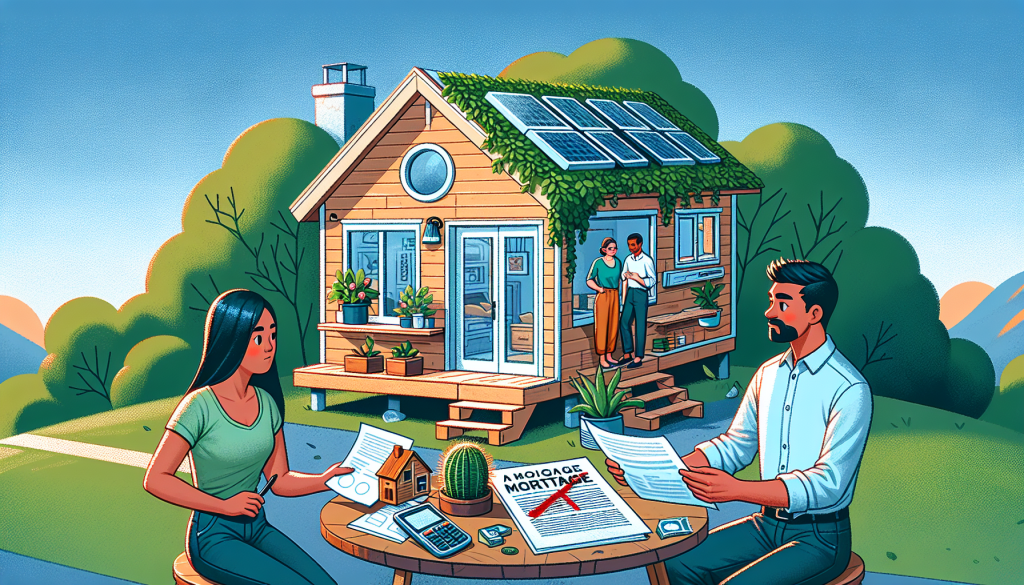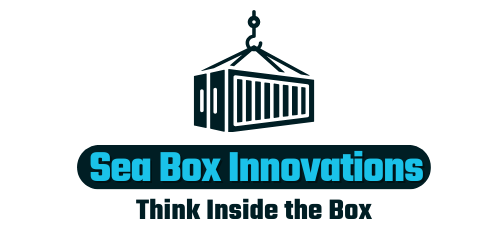Living in a tiny house has become an increasingly popular trend, as more people seek a simple and minimalist lifestyle. But amidst the excitement of downsizing and embracing a smaller dwelling, the question often arises: do you have to pay a mortgage on a tiny house? The answer to this query is not as straightforward as you might think. In this article, we will explore the various factors that influence whether or not you will need a mortgage for your tiny house, providing you with the essential information to make an informed decision. So, let’s get started and unravel the mysteries of tiny house financing.

What is a Tiny House?
Defining a Tiny House
A tiny house is a small, compact dwelling that typically measures between 100 and 400 square feet. These homes are designed to maximize space while minimizing excess, providing a simplified and minimalist lifestyle. They often feature clever storage solutions, space-saving furniture, and efficient use of natural light. Tiny houses can be either stationary or movable, offering individuals the flexibility to choose a lifestyle that suits their needs and preferences.
Benefits of Living in a Tiny House
Living in a tiny house comes with numerous benefits that make it an appealing option for many people. First and foremost, the cost of purchasing or building a tiny house is significantly lower than that of a traditional home. This affordability allows individuals to own their own home without the burden of a large mortgage. Additionally, tiny houses are designed with energy efficiency in mind, resulting in lower utility bills and a reduced carbon footprint. Furthermore, the smaller footprint of a tiny house promotes a more sustainable lifestyle by consuming fewer resources and producing less waste. Lastly, living in a tiny house encourages a simpler and clutter-free life, promoting mindfulness and a focus on experiences rather than material possessions.
Financing Options for Tiny Houses
Purchasing a Tiny House with Cash
One financing option for acquiring a tiny house is to purchase it outright with cash. If you have the means to save or have already accumulated the necessary funds, this can be a straightforward and stress-free option. By paying in cash, you can avoid the complexities and costs associated with loans and mortgages. However, it is important to consider the potential opportunity cost of tying up a large sum of money in a single purchase.
Using Personal Savings
Similar to purchasing with cash, using personal savings is another viable option for financing a tiny house. By using money that you have already saved up, you can avoid the need for loans or mortgages altogether. This option allows you to maintain control over your finances and avoid interest payments. However, it is crucial to ensure that you have enough savings to cover the cost of the tiny house, including any additional expenses such as land, utilities, and customization.
Obtaining a Personal Loan
If you do not have access to a significant amount of cash or savings, obtaining a personal loan can be an alternative option. Personal loans can provide you with the financial means to purchase or build a tiny house while allowing you to repay the loan over a predetermined period. These loans typically have higher interest rates than mortgages due to the absence of collateral. It is important to carefully consider the terms and conditions of the loan, including the interest rate, repayment schedule, and any additional fees.
Applying for an RV Loan
If you are considering a movable tiny house that meets the requirements of a recreational vehicle (RV), applying for an RV loan may be a suitable financing option. RV loans typically offer competitive interest rates and longer repayment terms compared to personal loans. It is crucial to ensure that your tiny house meets the necessary specifications and classifications to qualify for an RV loan. This option allows for flexibility and mobility, providing you with the ability to travel while still having a home.
Qualifying for a Home Mortgage
While unconventional, it is possible to qualify for a traditional home mortgage for a tiny house. However, several factors need to be considered, such as the size and classification of the tiny house, zoning and building codes, and the distinction between permanent and mobile tiny houses. Mortgage lenders may have specific requirements and restrictions for this type of financing, so it is essential to thoroughly research and speak with lenders who are familiar with tiny house mortgages.
Factors Affecting Mortgage Eligibility for Tiny Houses
Size and Classification of the Tiny House
The size of your tiny house plays a significant role in determining your eligibility for a mortgage. Lenders may have specific size restrictions or guidelines, so it is crucial to ensure that your tiny house falls within their criteria. Additionally, the classification of the tiny house, whether it is considered an RV, a manufactured home, or a permanent dwelling, can also affect mortgage eligibility.
Zoning and Building Codes
Zoning and building codes vary between different jurisdictions and play a vital role in mortgage eligibility. Some areas have specific regulations that limit or prohibit tiny houses, especially those on wheels. It is essential to research and understand the zoning and building codes in your desired location to ensure compliance and eligibility for a mortgage.
Permanent vs. Mobile Tiny Houses
Another critical factor affecting mortgage eligibility is whether your tiny house is permanently affixed to a foundation or mobile. Permanent tiny houses that meet local building codes may be more likely to qualify for a traditional mortgage. On the other hand, mobile tiny houses may be eligible for alternative financing options such as RV loans. It is important to consider your specific housing needs, lifestyle, and long-term plans when deciding between a permanent or mobile tiny house.
Mortgage Application Process for Tiny Houses
Gathering Documentation
Just like any mortgage application, gathering the necessary documentation is a crucial step in the process. This typically includes proof of income, tax returns, bank statements, identification documents, and any other financial information required by the lender. As a prospective tiny house owner, it is imperative to have all your documentation organized and readily available to streamline the application process.
Finding a Lender
Finding a lender who specializes in tiny house mortgages is essential, as they will have a better understanding of the unique considerations and requirements for this type of financing. Conduct thorough research and reach out to multiple lenders to compare rates, terms, and eligibility criteria. Engaging with professionals who are experienced in tiny house mortgages can provide valuable guidance and ensure a smoother application process.
Credit and Income Requirements
Like any traditional mortgage, credit and income requirements play a significant role in determining mortgage eligibility. Lenders will typically assess your credit score, debt-to-income ratio, and employment history to evaluate your ability to repay the loan. Strong credit and a stable income can improve your chances of securing a mortgage for your tiny house.
Down Payment and Interest Rates
The down payment amount and interest rates for a mortgage on a tiny house can vary depending on the lender and your financial situation. It is important to have a sufficient down payment to satisfy the lender’s requirements, which generally range from 10% to 20% of the purchase price. Interest rates may be higher for tiny house mortgages compared to traditional home mortgages due to the unique nature of these properties. It is crucial to compare rates from different lenders to secure the best possible terms.
Appraisal and Inspection
Before finalizing the mortgage approval process, lenders will typically require a professional appraisal and inspection of the property. This step ensures that the tiny house meets safety and quality standards and accurately assesses its value. The cost of the appraisal and inspection is usually borne by the buyer and serves to protect both the lender and the borrower. It is important to budget for these additional expenses when applying for a mortgage for a tiny house.

Alternative Financing Options for Tiny Houses
Renting or Leasing Land
If purchasing a tiny house outright or obtaining a mortgage is not a viable option, renting or leasing land can provide an alternative financing solution. By leasing a small piece of land, you can place your tiny house and enjoy the benefits of homeownership without the burden of a traditional mortgage. This option offers flexibility and affordability, allowing you to choose your location and move if desired.
Rent-to-Own Agreements
Rent-to-own agreements provide an alternative pathway to homeownership for individuals interested in owning a tiny house. This arrangement allows you to rent the tiny house initially, with a portion of the rent going towards the eventual purchase of the property. It provides the opportunity to assess whether living in a tiny house is right for you before committing to a mortgage or loan.
Crowdfunding
Crowdfunding has become increasingly popular as a means of financing various projects, including tiny houses. By sharing your vision and plans for the tiny house, you can reach out to friends, family, and even strangers who may be interested in supporting your venture. Crowdfunding platforms provide a convenient way to raise funds, and contributors often receive incentives or rewards based on their level of support.
Grants and Non-Profit Organizations
There are grants and non-profit organizations dedicated to providing financial assistance and support for individuals looking to live in tiny houses. These organizations aim to promote affordable housing and sustainable living. Conducting thorough research and reaching out to such organizations can potentially provide you with valuable financial resources to help support your tiny house dream.
Bartering or Trade Agreements
An unconventional financing option for a tiny house is to engage in bartering or trade agreements. If you possess valuable skills or assets that can be exchanged, you may be able to negotiate an agreement where you provide goods or services in exchange for the construction or customization of your tiny house. This option requires creativity, negotiation skills, and the ability to identify potential trade partners.
Potential Challenges of Obtaining a Mortgage for a Tiny House
Limited Lenders for Tiny Houses
One of the challenges of obtaining a mortgage for a tiny house is the limited availability of lenders specializing in this type of financing. Traditional mortgage lenders may not be familiar with the unique considerations and requirements of tiny houses, making it more challenging to secure financing. Prospective tiny house owners may need to invest additional time and effort in researching and contacting lenders who cater to this niche market.
Higher Interest Rates
Due to the unconventional nature of tiny houses and the associated risks, interest rates for mortgages on tiny houses may be higher compared to traditional home mortgages. Lenders may perceive tiny houses as higher-risk investments, leading to increased interest rates to compensate for this perceived risk. It is essential to carefully assess and compare interest rates from various lenders to secure the most favorable terms.
Limited Appraisal and Loan Options
The appraisal and loan options available for tiny houses may be limited compared to those for traditional homes. Tiny houses require specialized appraisers who are familiar with the unique characteristics and value factors of these properties. Some lenders may also have strict guidelines for loan-to-value ratios, which can limit the amount of funding available for a tiny house. It is crucial to research lenders who are knowledgeable about tiny house appraisals and can offer suitable loan options.
Zoning and Regulatory Hurdles
Navigating zoning regulations and building codes is a challenge that many tiny house owners face, especially when applying for a mortgage. Certain areas have restrictions on the construction and placement of tiny houses, which can affect mortgage eligibility. It is important to thoroughly research the zoning and regulatory requirements in your desired location to ensure compliance and eligibility for a mortgage.
Legal Considerations for Tiny House Mortgages
Property Ownership Rights
When obtaining a mortgage for a tiny house, it is crucial to understand and clarify the property ownership rights. Depending on the location and type of tiny house, property ownership rights may differ. It is important to consult with legal professionals who specialize in real estate law to ensure that your rights as a homeowner are protected.
Titling and Registration
Titling and registration requirements for tiny houses also vary depending on the jurisdiction and classification of the tiny house. Some tiny houses may require titles and registrations similar to recreational vehicles or manufactured homes. Understanding the titling and registration processes and requirements in your area is essential to ensure compliance and proper documentation for your tiny house.
Insurance Requirements
Insurance is a critical consideration when obtaining a mortgage for a tiny house. It is crucial to ensure that your tiny house is adequately insured, both for the physical structure and any belongings inside. Insurance requirements may vary depending on the classification and location of the tiny house. It is advisable to consult with insurance professionals who understand the unique needs and considerations of tiny house insurance.
Mortgage Alternatives for Affordable Tiny Living
Buy vs. Build
When considering financing options for a tiny house, one must weigh the benefits of buying a pre-built tiny house versus building one from scratch. Buying a pre-built tiny house may be more convenient and less time-consuming, but it may come at a higher cost. On the other hand, building your own tiny house allows for customization and potentially lower costs, but it requires time, effort, and construction expertise. It is important to consider your budget, timeline, and personal preferences when deciding between buying or building a tiny house.
Co-ownership and Co-living Communities
Co-ownership and co-living communities present an alternative financing option for individuals interested in tiny house living. By pooling resources and sharing expenses, you can collectively purchase or build a tiny house with others. This allows for cost-sharing and shared responsibility, making homeownership more accessible and affordable. Co-living communities can also provide a sense of community and support, fostering connections and shared experiences.
Tiny House Villages
Tiny house villages are emerging as a solution to the financial and social challenges of tiny house living. These communities consist of multiple tiny houses located in close proximity, often sharing common facilities and amenities. Tiny house villages provide residents with access to affordable housing, shared resources, and a supportive community. Financing options for tiny houses in villages may differ from traditional mortgages, offering more flexibility and affordability.
Homesteading and Off-Grid Living
Homesteading and living off-grid offer an alternative approach to financing and living in a tiny house. By embracing self-sufficiency and sustainability, individuals can reduce their reliance on traditional mortgages and conventional utilities. Homesteading involves living off the land and utilizing renewable resources, while off-grid living involves disconnecting from public utilities, such as water and electricity. These lifestyles can provide significant cost savings and a more self-reliant way of living.
Pros and Cons of Paying a Mortgage on a Tiny House
Pros of Paying a Mortgage
Purchasing a tiny house with a mortgage offers several advantages. First and foremost, a mortgage allows you to spread out the cost of the tiny house over an extended period, making it more affordable in the short term. This can free up funds for other expenses or investments. Additionally, paying a mortgage allows you to build equity in your tiny house, providing a sense of ownership and potential financial stability in the long run. Lastly, if you plan to remain in your tiny house for an extended period, a mortgage can offer the security and stability of having a permanent home.
Cons of Paying a Mortgage
Despite the benefits, there are also some drawbacks to paying a mortgage on a tiny house. One significant consideration is the potential for higher interest rates and shorter repayment terms compared to traditional home mortgages. This can result in higher monthly payments and increased overall costs. Additionally, if you experience financial difficulties, such as a job loss or reduction in income, paying a mortgage on a tiny house may become more challenging. It is important to carefully assess your financial situation and consider potential risks before committing to a mortgage.
Conclusion
Purchasing or financing a tiny house requires careful consideration, research, and planning. Various financing options, from cash purchases to mortgages, offer flexibility and affordability for those interested in tiny house living. It is essential to explore the advantages and disadvantages of each financing option, as well as the legal and regulatory considerations unique to tiny houses. Whether you choose to pursue a conventional mortgage or explore alternative financing options, the freedom and simplicity of tiny house living can provide a fulfilling and sustainable lifestyle.

I am James, the creator behind SeaBoxInnovations.com. Welcome to our premier online destination dedicated to the world of sea containers. Think Inside the Box is our tagline, and our website is your go-to source for exploring the endless potential of these versatile and adaptable containers. Whether you’re interested in purchasing, customizing, or learning about the latest trends in container architecture and design, we have you covered. Join us as we bridge the gap between traditional uses and cutting-edge applications, promoting sustainability and innovation in design and construction. Get ready to embark on your next big project with SeaBoxInnovations.com.

